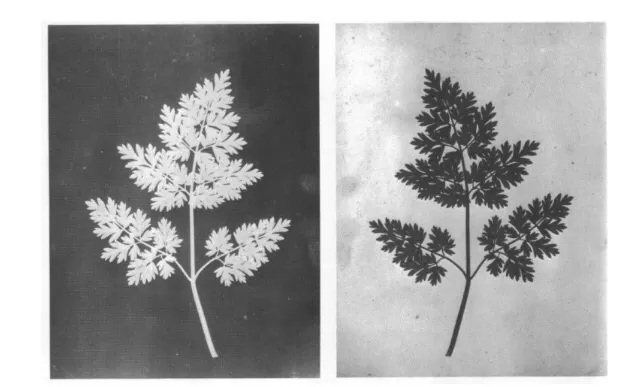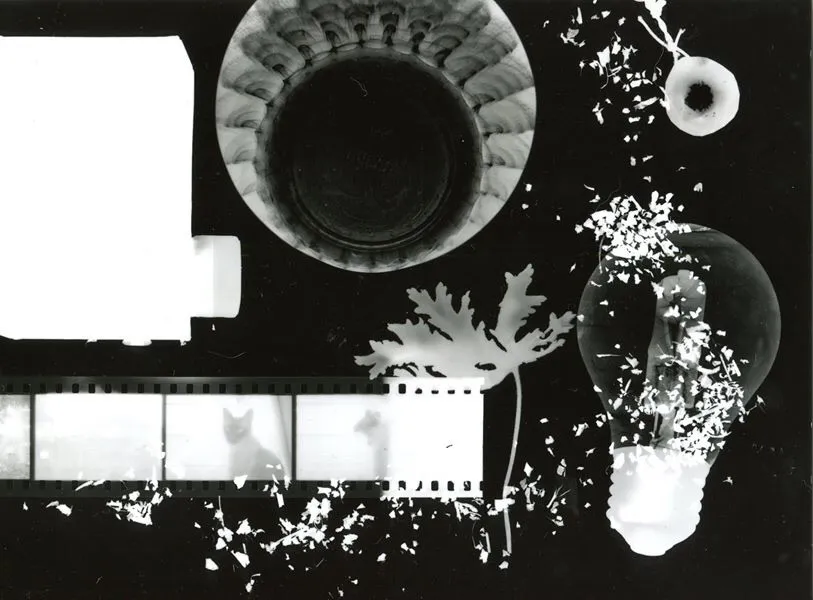How photograms work
Photograms are made through a simple cameraless process that dates back to the earliest photographic experiments. Pioneering 19-century photographer W.H. Fox Talbots developed this technique for his “shadowgrams”, but it was Man Ray who popularized it, using it to make creations that he called “rayograms”. This technique produces a shadowy negative image that is obtained by placing objects directly on photographic paper or other light sensitized surface in the darkroom and then exposing it to light, often using an enlarger.

People ask: “What camera do you use?”
I say: “You don’t ask a writer what typewriter he uses.”
- Man Ray
The process explained
1. Composition
While working under safelight conditions, position your objects on the photographic paper.
Keep in mind that the resulting image will have a 2d appearance if the object is opaque and in close contact with the paper, and 3d if less opaque and further away.
2. Expose
Turn on the light or if working with a red filter enlarger, remove the filter to expose the photogram. Exposure time will vary so you may need to perform an exposure test on a small sample of paper beforehand.
3. Develop
Develop the print according to the solution you are using, this typically takes about 2 minutes.
Transfer the print to the stop bath for minimum 30 seconds and then fix thoroughly.
4. Wash and dry
Once the print is fixed, wash it for at least 10 minutes (longer for fibre-based paper) and hang it up to dry.
Assignment
Research the work by Swiss artist Ruth Erdt and try your own Chemigram!
This is my attempt:

Photogram by juli_analogue
References:
Photograms: Experimental Photography - A Handbook of Techniques